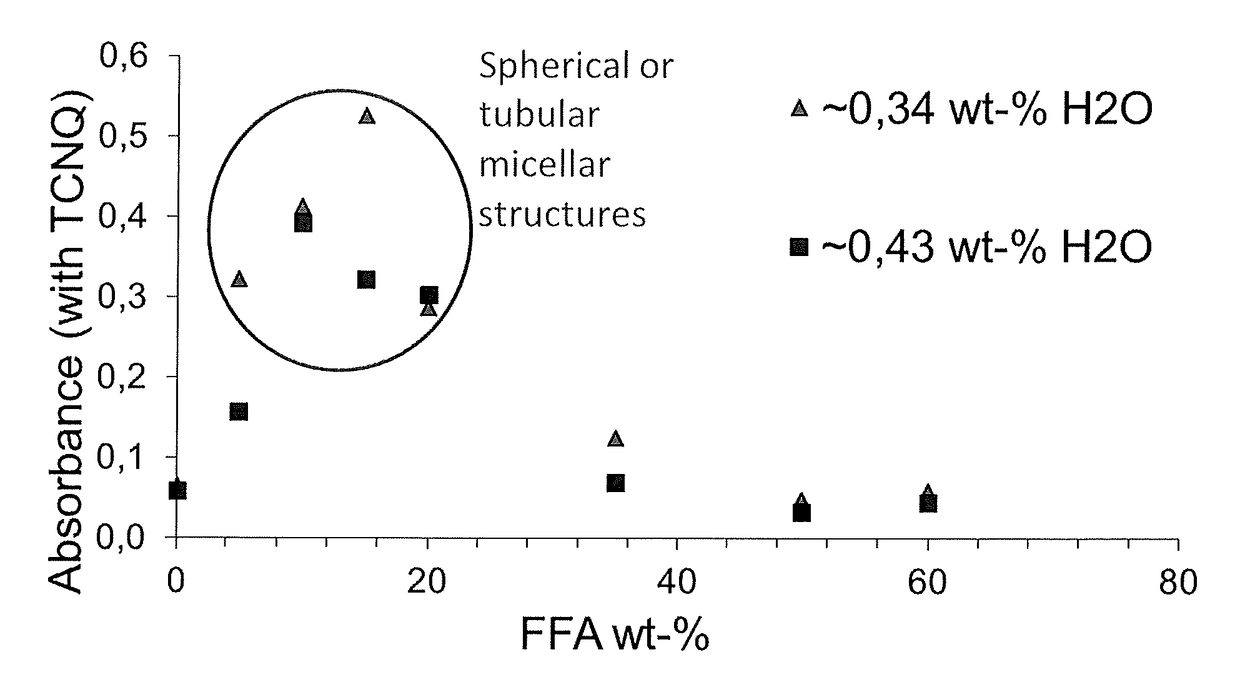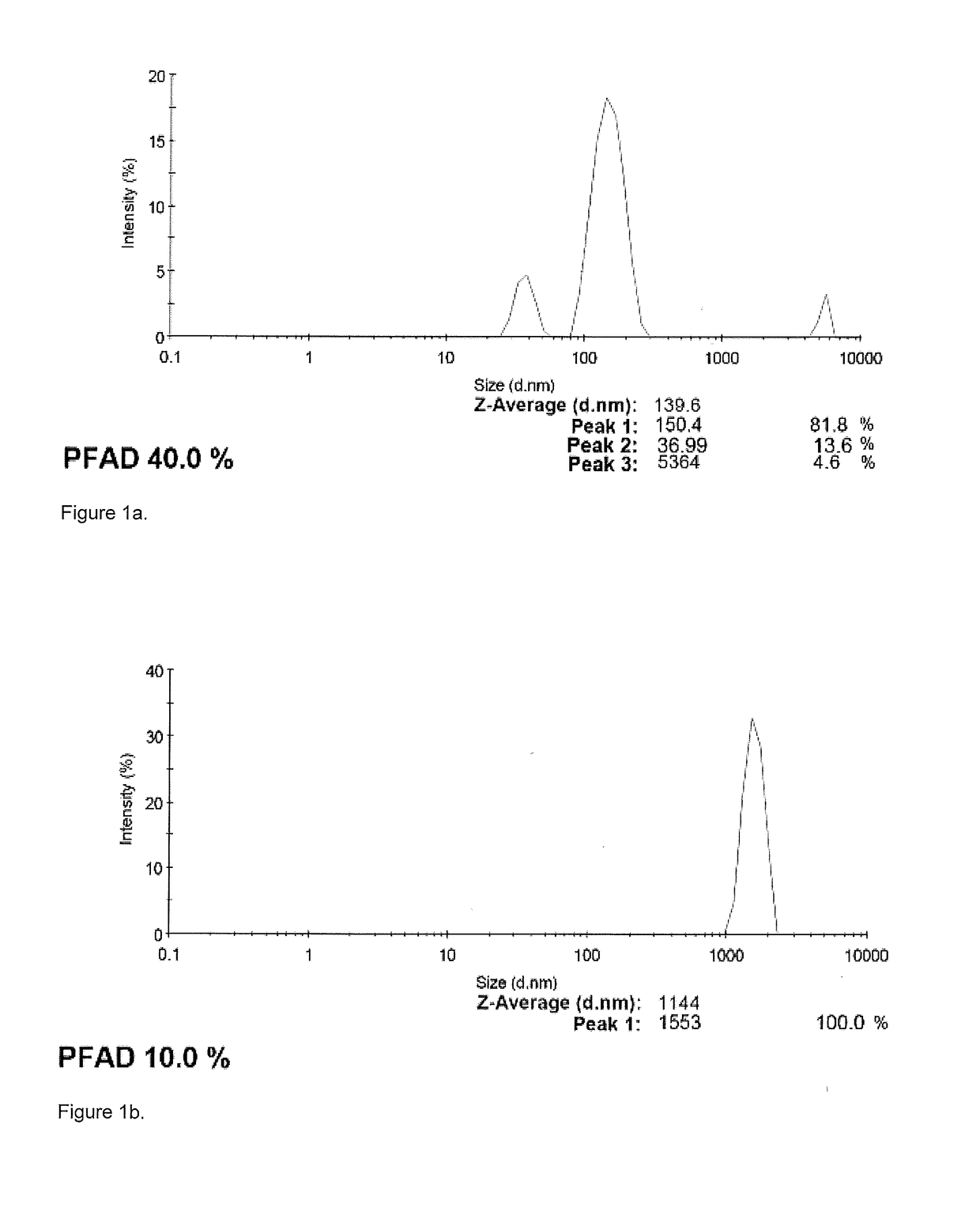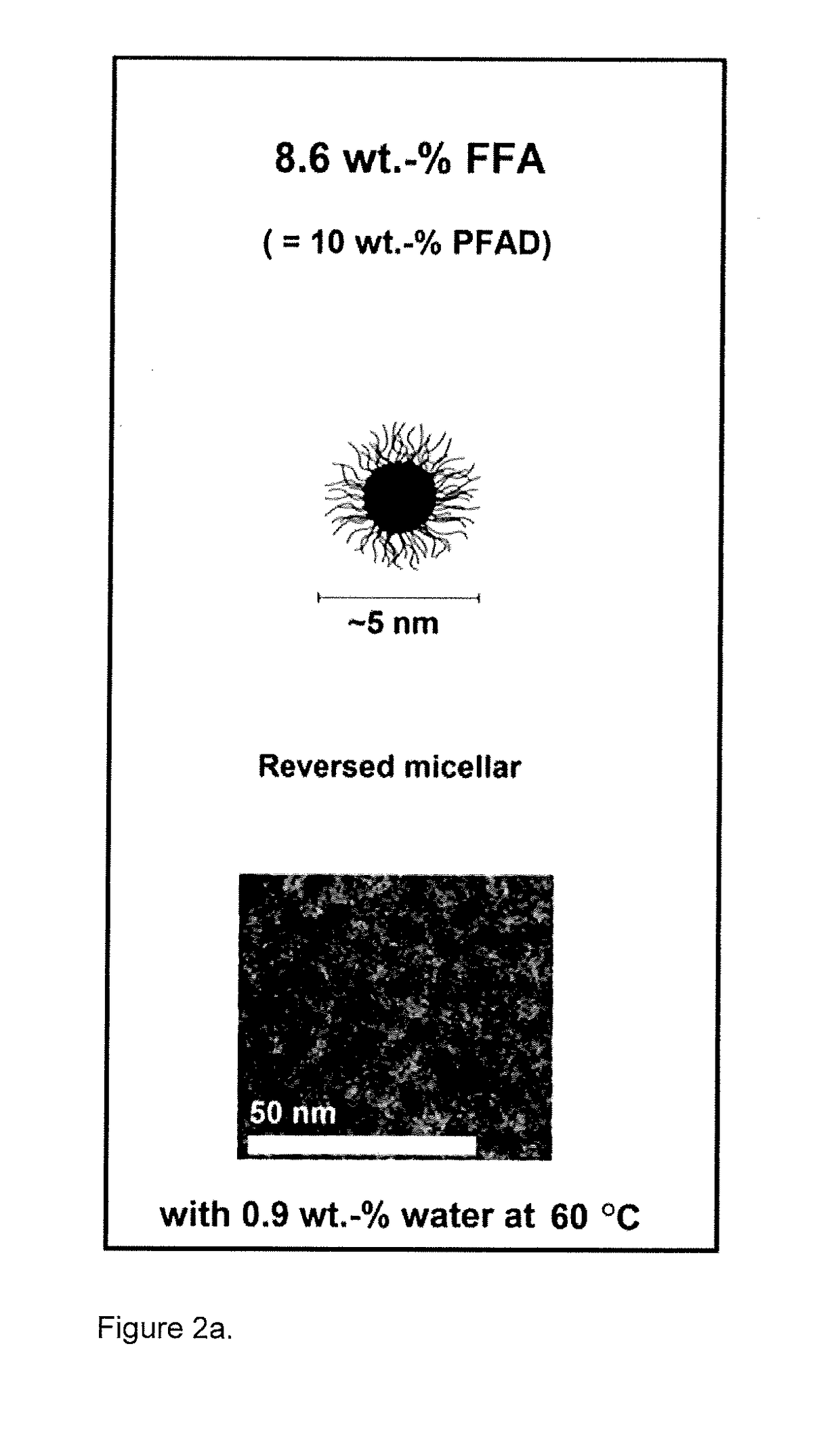Fatty acid composition
- Summary
- Abstract
- Description
- Claims
- Application Information
AI Technical Summary
Benefits of technology
Problems solved by technology
Method used
Image
Examples
example 1
[0038]Micellar structures in oil were measured by Malvern Zetasizer Nano ZS90 (Malvern Instruments Ltd., Worcestershire, UK) and JEOL-Transmission Electron Microscopy (cryo-TEM) (JEOL, Tokyo, Japan).
[0039]The sample size was according to instrument standard, 1.2 ml. The measurements were conducted at 60° C. Results were obtained as particle size distributions from which different populations were identified. Thereby the particles in the reference sample, the background, was taken into consideration. Sample requirements were met: (1) dispersant should be transparent, (2) refractive index of dispersant should be different from particles, (3) refractive index and viscosity of dispersant should be known with an accuracy better than 0.5%, (4) dispersant should be compatible with particles (i.e. not cause swelling, dissolution or aggregation) and (5) it should be clean and filterable. However, measurements are sensitive to the presence of large particles, aggregates and dust.
[0040]Cryo-TE...
example 2
[0069]Mixtures of purified rapeseed oil and oleic acid (FFA) were prepared. 1 wt-% of commercial lecithin was added to them along with varying water amounts. Added lecithin and water mimic the true characteristics of the feedstock and inevitable impurities therein. The presence of micelles was detected with a TCNQ method. The TCNQ-dye (7,7,8,8-tetracyano-quino-dimethane), a component that turns coloured when it is solubilized in micelles, was added to samples (6 mg / 6 g sample or 12 mg / 12 g of sample). Samples were then agitated at room temperature for 5 hours using rotary agitator. After agitation, the excess TCNQ was removed using centrifugation at 800 g for 20 min. The absorbance spectra of the samples were measured from the upper phase using spectrophotometer with wavelength λ=480 nm.
[0070]The absorbances are presented in FIG. 3. The samples were also subjected to SAXS (Small angle X-ray scattering) measurements to identify what, if any, micellar structures were present in the sa...
PUM
 Login to View More
Login to View More Abstract
Description
Claims
Application Information
 Login to View More
Login to View More - R&D
- Intellectual Property
- Life Sciences
- Materials
- Tech Scout
- Unparalleled Data Quality
- Higher Quality Content
- 60% Fewer Hallucinations
Browse by: Latest US Patents, China's latest patents, Technical Efficacy Thesaurus, Application Domain, Technology Topic, Popular Technical Reports.
© 2025 PatSnap. All rights reserved.Legal|Privacy policy|Modern Slavery Act Transparency Statement|Sitemap|About US| Contact US: help@patsnap.com



